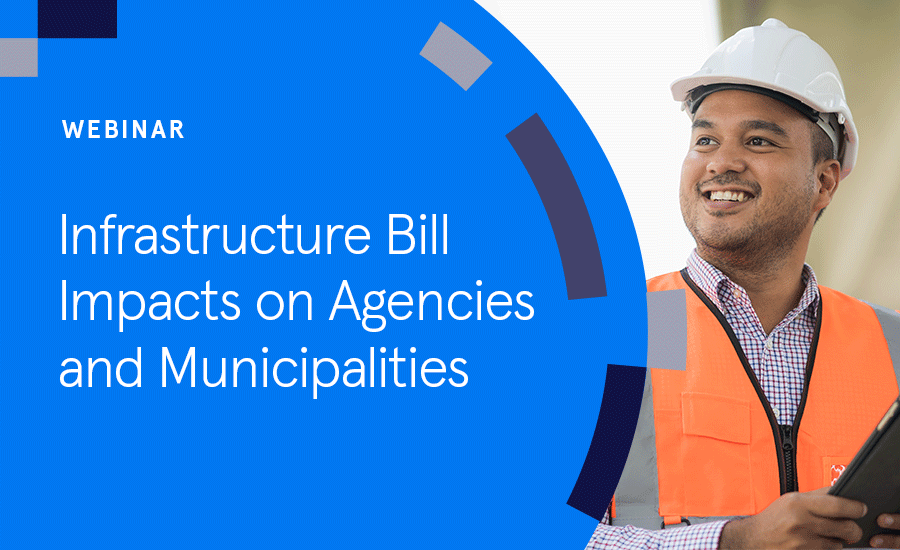The Infrastructure Investment and Jobs Act will mark a much-needed $550 billion investment into roads, bridges, stormwater systems, and other essential infrastructure. On August 24, Infotech was joined by representatives from Trimble and Esri to discuss the major impacts of incoming federal funding. Here are the biggest takeaways from that discussion:
Gradual Funding Rollout

It will be some time before the industry sees the full scope of this funding, with the majority of spending coming in 2025, 2026, and 2027. $20 billion in discretionary grant spending is earmarked for 2021-2022. While there will be no immediate ramp-up to spending, the numbers will be significant and DOTs can expect their funding to increase over the next several years.
“This bill is actually going to be quite a bit different than the recovery act. I don’t think we’re looking at shovel-ready. I think the standard transportation reauthorization will continue normal DOT spending. Most of this is going to be focused on discretionary grants.” - Terry Bills, Esri
Focused on the Present
The motto of this bill’s focal points is “business as usual.” There is a substantial amount of funding in the bill to address traditional infrastructure needs and improve the quality of infrastructure nationwide. That said, this iteration of the bill does not do much to address the future of our transportation networks, nor does it build a platform for future growth or redefine the parameters of infrastructure as we know it.
“You’re going to see the formula funding as it is today continue in a bit of ‘business as usual’ with more, meaning more funding. What that will do for surface transportation, for highways, bridges, and roads especially, is that when the IIJA funding comes down, we’ll start to see advancement or acceleration of projects out of the state transportation improvement plans.” - Brian McInnis, Trimble
Setting the Standard
While the bill has a number of funding buckets for specific project areas, setting the standard for reporting, compliance, and tech usage will ultimately fall on the US Department of Transportation, as it has in years’ past. State DOTs will need to look to USDOT to identify project requirements and overcome staffing and capability challenges. USDOT will most likely work with FHWA to determine specific technical and reporting requirements on projects supported by this funding.
“USDOT is going to really have to ramp up and establish what are the evaluation criteria and that sort of thing.” - Terry Bills, Esri
Driving Tech Adoption
Currently, this is $100m set aside in the infrastructure bill for the promotion of construction technology on IIJA-funded projects. This number is relatively small when compared to the scope of the bill, but will enable DOTs to use project-specific tech language as they set their requirements for project management.
“The challenge for DOTS, counties, and cities is to become more efficient with all this additional funding. I think we’re going to see technologies advance more quickly. There will be a need for data to expand projects and keep track of them. e-Construction and BIM will be accelerated as well. There’s a lot more work that has to be processed.” - Doug Couto, former CIO, Michigan DOT
Interstate Construction Support
Construction projects that cross state boundaries are often overlooked by federal funding. In this bill, there is specific language for funding projects that cross state lines. With this information, DOTs and LPAs can partner with other agencies to identify the types of projects that will get approved and funded.
“In the current bill, there’s funding for [projects that cross state lines]. I think we need to look at and understand what is the real, intermodal transportation network that we need to support our complex supply chains for the 21st century. We need to take that comprehensive, national network view.” - Terry Bills, Esri
For a deeper dive into these topics with representatives from Infotech, Esri, and Trimble, check out our latest infrastructure panel webinar.


Post a comment to this article
Report Abusive Comment